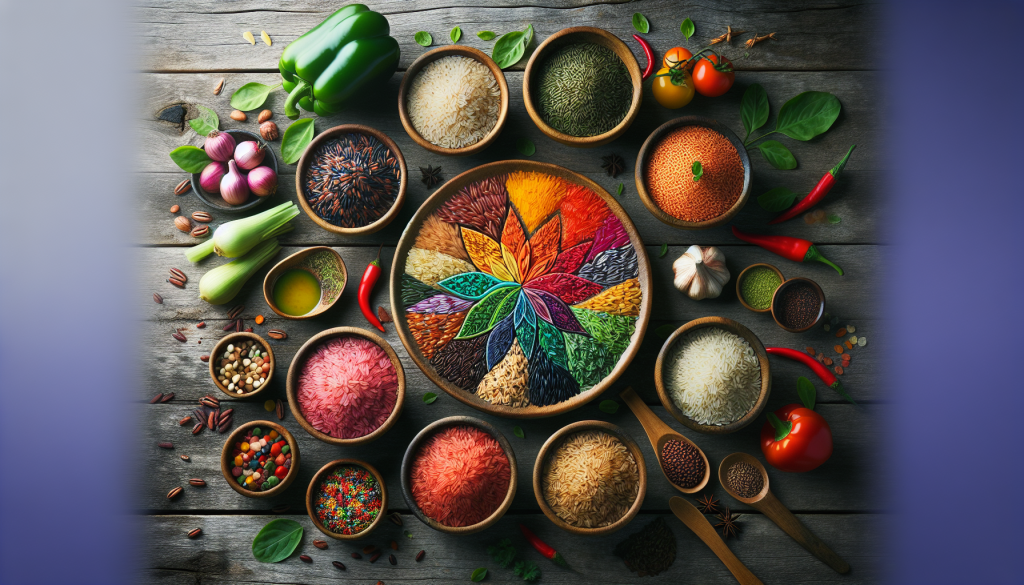
What is the Exotic Rice Diet? A Comprehensive Guide to Rice Varieties and Their Benefits
In recent years, the Exotic Rice Diet has become a captivating topic in the world of health and nutrition. This diet is not just about eating rice—it’s about exploring the diverse varieties of rice that exist and understanding their potential benefits and misconceptions. Could rice, a staple food for over half the world’s population, really be a part of a healthy weight-loss plan? Let’s dive into the details.
At its core, the Exotic Rice Diet emphasizes the consumption of various rice types, each with unique flavors and nutritional benefits. From fragrant jasmine to nutty black rice, this diet encourages a shift from viewing rice as a simple side dish to recognizing it as a key player in a balanced diet. Historically, rice has been a pivotal food source in many cultures, particularly across Asia, where 90% of global rice production occurs. The diet connects to health trends by challenging the notion that rice is unhealthy or fattening, despite its high carbohydrate content.
Let’s consider some intriguing facts about rice. For instance, rice is low in fat, sugar-free, gluten-free, and packed with essential B vitamins. It provides necessary carbohydrates and fiber, making it a cornerstone for energy and digestion. The high carbohydrate content of rice often sparks debate, especially among low-carb diet advocates. However, studies, such as one from 1975, suggest that rice can be a weight-loss wonder. Participants in a rice-heavy diet program lost an average of 63.9 kilograms, proving that calorie control and overall diet balance are key to shedding pounds.
The diet’s recent surge in popularity can also be attributed to cultural shifts and increased exposure to diverse cuisines. In countries like Japan, Thailand, and India, rice serves as a primary food source, supporting large populations while maintaining slim physiques. This cultural significance bolsters the diet’s reputation as a healthy lifestyle choice.
Starting the Exotic Rice Diet is straightforward. Begin by incorporating different types of rice into your meals. Try mixing white rice with brown, or adding aromatic varieties like basmati to stir-fries. Remember, portion control is crucial; one to two small bowls of cooked rice per day is advised. Pair your rice dishes with ample vegetables and lean proteins to create a balanced plate that controls blood sugar levels and enhances fullness.
When considering the Exotic Rice Diet, it’s important to acknowledge key factors like nutritional balance. While rice is nutrient-rich, it should not be the only carb source. Incorporating other starchy foods strategically, like within a three-hour post-exercise window, can optimize your body’s carbohydrate processing abilities. Additionally, pay attention to cooking methods. Plain boiled rice is the healthiest option, while rice that’s fried or cooked with high-fat ingredients can negate some benefits.
For a deeper dive, let’s explore the specifics of preparing and consuming exotic rice varieties. A simple meal plan might include breakfast bowls with jasmine rice, lunch stir-fries with wild rice, and dinner plates with black or red rice paired with a variety of fresh vegetables and lean proteins. Recipes like coconut rice pudding or saffron vegetable pilaf can add variety and enhance the diet’s appeal.
In summary, the Exotic Rice Diet encourages us to embrace rice as more than just a carb source. By exploring a variety of rice types and focusing on balance and portion control, rice can be a healthy, satisfying component of any diet. As a staple with rich cultural roots and myriad health benefits, rice deserves a spot on your plate. If you’re looking to energize your meals and explore new culinary horizons, the Exotic Rice Diet might just be the perfect journey.